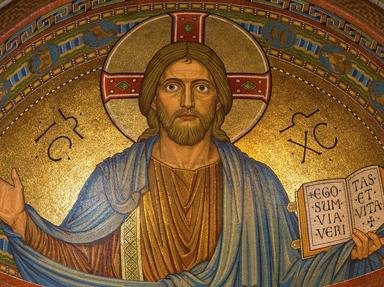Quiz Answer Key and Fun Facts
1. Who was the notorious thief in the Hebrew Bible, or the Old Testament, who stole a number of valuable items in Canaan while the Israelites were preparing to drive out the inhabitants and assume possession of the Promised Land? (Joshua 7:1)
2. What's the name of the woman who posed as a prostitute and tricked her father-in-law into impregnating her? (Genesis 38:1-30)
3. Who was a run-away slave who met up with Paul and ended up becoming a Christian and then returned to his original master? (Philemon 1:10)
4. In what community did Jesus raise a widow's son from the dead, as per Luke 7:11-15?
5. According to John 12:3, Mary, the sister of Lazarus, anointed Jesus' feet. What was the substance she used?
6. Who was the young teenager who, according to Scripture, gave birth to Jesus while still a virgin?
7. What was the name of the young woman who replaced Vashti as queen?
8. In three different Gospels -- Matthew, Mark and Luke -- there is mention of the disciple Bartholomew. However, in the Gospel of John, there is no mention of Bartholomew. Rather he is identified as a disciple with a different name. What is the disciple's name in the Gospel of John? (John 1:45)
9. Scripture tells of a woman who had a bleeding problem and no doctor could help her, but she was immediately cured when she secretly touched Jesus. How many years did she have the bleeding problem? (Mark 5:28)
10. Now take the first letter from each answer to come up with a nine-letter word that is used eighty-nine times in the NKJV and the NIV. (In Scripture, the word is almost always used in a sentence containing the word 'sin'.)
Source: Author
Cowrofl
This quiz was reviewed by FunTrivia editor
looney_tunes before going online.
Any errors found in FunTrivia content are routinely corrected through our feedback system.
